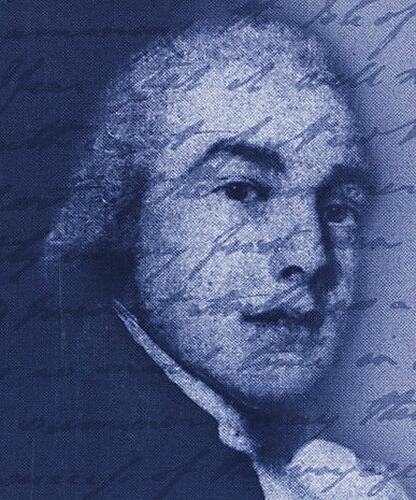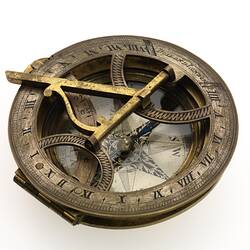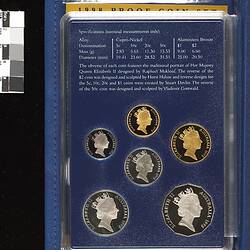George Bass was a surgeon and navigator primarily remembered for his part in four maritime expeditions along the coast of Australia between 1795 and 1799. The first two of these, both undertaken with Matthew Flinders in boats called The Tom Thumb, charted the coast of New South Wales between Sydney and Lake Illawarra. In the third Bass explored the coast of New South Wales and what is now Victoria in a whaleboat. This voyage provided the first European sightings of Wilsons Promontory and Westernport Bay and strongly indicated the existence of Bass Strait separating Tasmania from the mainland. The fourth voyage, also with Matthew Flinders circumnavigated Tasmania in the colonial sloop Norfolk thus conclusively demonstrating that Tasmania was an island.
George Bass was born in Lincolnshire around 1771. At the age of 16 he was apprenticed to a surgeon in Boston, Lincolnshire. After two years he moved to London to undertake training as a surgeon and in 1789 he graduated with a diploma as a member of the Corporation of Surgeons, and then two months later as a naval surgeon. Between 1789 and 1794 Bass served as surgeon on a number of ships, initially in the English Channel and around the coast of England but subsequently on voyages across the Atlantic Ocean to the West Indies and Newfoundland.
In 1794 Bass requested, and received, a transfer to the Reliance before its voyage to New South Wales to carry Governor Hunter to the colony. Matthew Flinders was also part of this expedition and it was then that he met Bass and formed a friendship. The expedition arrived in the colony in September 1795.
The first Tom Thumb voyage between 26 October and 5 November 1795 included only Bass, Flinders and Bass's servant William Martin and travelled south to the St Georges River. The expedition in the second Tom Thumb, a slightly larger boat but with the same three crew, began on 24 March 1796 and travelled as far south as Lake Illawarra before returning to Port Jackson. Amongst other discoveries this voyage demonstrated to the colonists that Indigenous Australians from different parts of the country spoke very different languages.
On 3 December 1797, this time without Flinders, Bass set out in a whaleboat with a crew of 6 on the voyage that would take him along the coast of what is now Victoria as far as Westernport Bay. They returned to Port Jackson on 25 February 1798. The journey was highly regarded at the time as one of the great feats of seafaring. The whaleboat was left on the shores of Sydney Harbour and was regarded as something of an icon by the locals. French naturalist Francois Peron recorded that 'Some snuff-boxes made from the wood of its keel form relics of which the possessors are as proud as they are careful. The Governor [King] himself considered that he could not make a more honourable present to our chief [Nicolas Baudin] than a piece of the wood set in a large silver box, around which were engraved the principal details of the discovery of Bass Strait' (Péron, 2006).
The whaleboat voyage, along with Flinders' separate voyage to the Furneaux Islands on the Francis convinced the pair that Tasmania was an island, and they set out to prove this. In 1798 Flinders was promoted to lieutenant and given command of the Norfolk to determine whether a strait separated Tasmania from the mainland. Between 7 October 1798 and 11 January 1799 Flinders and Bass sailed through Bass Strait, around Cape Grim and down the west coast of Tasmania, around the southern tip and then back up the east coast and back to Sydney after exploring the mouth of the Derwent River for some days. Demonstration of a route through Bass Strait could potentially cut a week off a voyage to Sydney and avoid some of the worst weather along the route.
After the Norfolk voyage Bass decided to return to England, and left the service of the Reliance in 1799. Back in England he left the navy entirely, determined to pursue a commercial venture. He formed a syndicate in order to buy a ship, the Venus, to trade goods with the Australian colony. In England Bass also married Elizabeth Waterhouse, eldest sister of Henry Waterhouse the captain of the Reliance. However within three months of the wedding Bass had left England once more.
Bass returned to New South Wales in 1801 and undertook a number of voyages between Australia, New Zealand and the south Pacific. In 1803 Bass started a voyage to Tahiti, intending to head on to South America but the Venus was lost and Bass was never heard from again. There has been speculation that Bass was captured by the Spanish and sent to South America as a prisoner based on unconfirmed reports from other ships at the time, but no evidence for this theory has been discovered.
As well as being a maritime explorer Bass was also an enthusiastic naturalist and his other achievements during his time in Australia include an attempted crossing of the Blue Mountains, the positive identification of a coal seam south of Sydney, descriptions of several unknown species of plants and one of the first descriptions of the wombat.
ReferencesBowden, Keith Macrae, 1966, 'Bass, George (1771-1803)', Australian Dictionary of Biography, Canberra, National Centre of Biography, Australian National University, viewed 16 January 2012, <http://adb.anu.edu.au/biography/bass-george-1748/text1939>
Péron, François, 2006, Voyage of discovery to the southern lands, 2nd edn, 1824. Book I to III, comprising chapters I to XXI by François Péron; continued by Louis de Freycinet; translated from the French by Christine Cornell; introduction by Anthony J. Brown, Adelaide, Friends of the State Library of South Australia
More Information
-
Keywords
-
Authors
-
Article types



